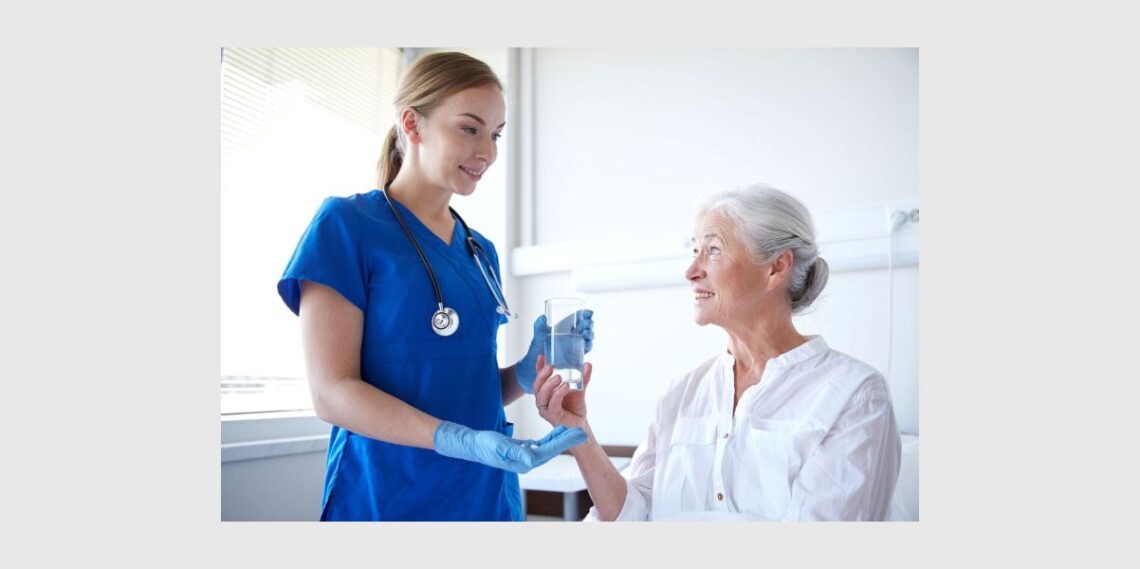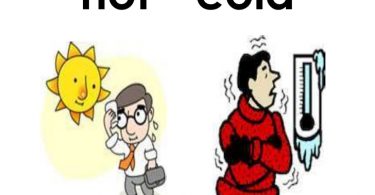Introduction
As a Homeopath and an Aromatherapist, the administration of homeopathic medicines and essential oils to the patient has always been a field of inquiry to be further investigated. This discussion is based on Aphorisms 284 and 285 – alternative methods for administering medicines (O’Reilly 1996, pp254-255) and the progression of thoughts arising from this starting point.
Understanding that Hahnemann was in favour of administering homeopathic medicines by olfaction or massage leads to an initial connection between the two modalities of aromatherapy and homeopathy. Is there a relationship? Quite often in the field of homeopathy there is an adamant refusal to utilise aromatherapy at the same time as homeopathy; this can be seen in Davis (1999, p148) where she states that opinion can vary from a total ban of aromatherapy when homeopathy is being used, to a feeling that no harm can be done, provided a few strong smelling oils are avoided (e.g., eucalyptus and peppermint).
The concept of a relationship between aromatherapy and homeopathy is discussed in
this article by addressing the methods of delivery as well as the theories that are behind the therapies. Drawing out the relationship is a comparison of the homeopathic medicine Chamomilla and the aromatherapy essential oil German chamomile, both sourced from the same plant, Matricaria recutita or Matricaria
chamomilla. Overall there are some similarities between the two vibrational therapies and this is shown in the uses of the chosen essential oil and homeopathic medicine.
There is however, a need for further structured research in the area of using essential oils in conjunction with homeopathy as a complementary, or synergistic, therapy by qualified practitioners. This is especially true where the medicine has worked well for
the patient and where an essential oil is available from the same source plant.
Question
The question being proposed in this article is, “in the use of essential oils and the equivalent homeopathic medicines, is there a genuine commonality in the therapies and products, and hence an ability to utilise both in practice where they are available?”
To illustrate this, the properties of the homeopathic medicine Chamomilla and the essential oil German Chamomile are illustrated showing potential similarities or differences. Both of these products are sourced from the same plant, Matricaria recutita, or Matricaria chamomilla (Vermeulen, 2002, Worwood, 1997), which is within the compositae family of plants. One area of difference initially is where the plants are originally sourced from, as this may change the constituents of the plant used (Worwood, 1997). This can be seen in the various chemotypes in use by aromatherapists. According to Battaglia (1995) there are at least 4 principal chemotypes of German chamomile.
Method
I drew on previous experiences with aromatherapy and books written by well known aromatherapists on emotions and subtle aromatherapy (Worwood 1997, Price 2000, Davis 1991). The next step of the project consisted of searching worldwide web databases (EBSCO, Proquest, PubMed and Science Direct) to establish what papers were available that related to the following combinations;
“aromatherapy and emotions”,
“olfaction and homeopathy”,
“aromatherapy and homeopathy”.
From these searches and the reading it became evident early on that the amount of research into these areas was limited.
Findings
Understanding Olfaction
Olfaction, or smelling, is when molecules hit the olfaction bulbs in the nose and an impulse transports directly to the limbic system (Tortora, 2000). It is in the limbic system (hippocampus, amygdala, the septal area and several regions of the cerebral cortex, Worwood, 1997) that the emotions, sexual feeling, learning and memory of an individual occur (Wabner, 1998, Worwood, 1997). By getting molecules, or a signal, to directly go to the centre of our emotions and memories as an electrical impulse, there is an immediate effect, as shown when aromas change actual brain wave patterns (Woods-Lavoie 2001).
What Methods of Delivery Are Utilised?
In homeopathy olfaction is not a usual method of delivery for the medicines as classically administration by mouth tends to be used (either by pillules or drops of liquid). However, in the 4th and 5th editions of the Organon (Farr 1996), the method of preference given by Hahnemann was olfaction. Within the 6th edition of the Organon (O’Reilly, paragraph 284) Hahnemann still mentions olfaction as a method of delivery of medicines as he states that the nose and respiratory organs are receptive to the effect of medicines in the liquid form. Given that the methodology of olfaction is still relatively unknown, the effect of the homeopathic medicines could probably be delivered to the limbic region in much the same methodology as the aroma molecules.
Also within the 6th edition of the Organon (O’Reilly, 1996, aphorism 285) Hahnemann further states that very old diseases can benefit from the rubbing onto the body of the same medicine that is being taken internally, so long as the medicine has proven to be of use when taken internally.
Aphorism 285: Thus, the cure of very old diseases can be furthered by the physician rubbing (on the back, arms, upper and lower legs) the same medicine which is being taken internally and proves itself to be salutary to the patient when taken internally
This may relate well to the use of the essential oil and homeopathic medicine, both derived from the same source, at the same time, so long as the homeopathic medicine has worked well initially for the patient.
Aromatherapy has many methods of delivery but generally the essential oils enter the body either as airborne particles coming into contact with mucous membranes (inhalation, suppositories, pessaries, and oral) and olfaction bulbs, or through absorption via the skin (massage, baths).
What Dilutions Are Used?
For the preparation of homeopathic medicines, the principle of dilutions, or triturations, with the addition of the idea of potentisation (succussion of the liquid between dilutions) (O’Reilly, 1996 aphorism 269) is utilised. The homeopathic dilutions start with a mother tincture and from there the dilutions/tirturations and potentisations are performed. The 1X potency is equivalent to 1% dilution (1 in 10). After a very short number of dilutions the quantity of the original substance within the medicine has dropped below Avagardro’s number resulting in there being no scientifically observed matter remaining in the potency (Gerber, 2001, p81).
A similar principle is used in the preparation of oils for use by Aromatherapists. Typically aromatherapists use essential oils in a 1 – 2% or 1 – 3% dilution (15 – 20 or 15 – 30 drops in 50ml of carrier oils, Price & Price, 2007, p149, Battaglia 1995, p272) when massaging the body and this has an effect on the physical body directly. After dilution, the mixture is typically mixed together by stirring. When approaching the use of oils within subtle aromatherapy, or aromatherapy for the emotions, Davis (1991, p17) recommends that the dilutions be as low as 0.5% to 1% and the oil does not have to be applied directly to the body. This dilution is then similar to the homeopathic medicine potencies of 1X and 2X (see previous), with the incorporation of a similar step to potentisation, mixing with some vigour.
An interesting point to note is that when an essential oil “mixes” with water where the water appears to be untouched by the oil (visually), the oil can still be tasted in that water, Worwood 1997. Is this an indication that the vibration of the essential oil has been transferred to the water? Something to be further investigated at the molecular level.
Law of Similars
Homeopathy is based on the principle of “like cures like”. This principle was researched extensively by Hahnemann himself and is shown throughout the Organon with examples such as “disease is born of like things, and by the attack of like things people are healed – vomiting ends through vomiting” from a book by Hippocrates (O’Reilly, 1996, p57) amongst others. This led Hahnemann to his Law of Similars that
is based on the statement that “in the living organism, a weaker dynamic affection is permanently extinguished by a stronger one, if the stronger one (while differing from it as to mode) is very similar to the weaker one in its manifestations” (O’Reilly, 1996 paragraph 26).
Aromatherapy may also utilise similar principles in the use of the essential oils for certain ailments in which the raw material may cause similar complaints, without actually calling it a law of similars. This can be shown with German Chamomile where
it is known that the fresh plant can cause dermatitis (Chevallier, 2001, p80) and the essential oil is used in treating skin conditions, especially where the skin is very sensitive, red and dry (Battaglia, 1995, p152).
Worwood (1999, p128 – 130) states that in order to practice holistic aromatherapy, the practitioner needs to include physical, emotional and spiritual assessments for the individual and for the oil. Within homeopathy it is also understood that both the individual and the medicine are to be similar in all aspects, ensuring that the totality is obtained. This will include the physical, emotional and spiritual assessments (O’Reilly, 1996, aphorisms 18, 21) of both the individual and the medicine.
Vibrational Therapy
According to Davis (1991, p16 -17) overall vibrational therapies aim to restore harmony to a body by subtle means, by gently restoring health through a rebalancing
of the vibrations of the body. It is not the aim of the oil or the medicine to directly heal the physical damage, but to restore the harmony in the subtle body, the vibrations of the body, and it is from there that physical healing progresses. This is the aim in all vibrational therapies. These vibrational therapies include subtle aromatherapy, homeopathy, flower remedies, acupuncture and others.
Combined Therapies For Treatment of Physical and Emotional Conditions
When treating with aromatherapy a word comes to mind, that of “synergy”. The synergistic effects of essential oils is such that when an active ingredient of the oil is separated from the oil and used medicinally, the overall effect is less than when the essential oil is used (Worwood, 1997, p18). A typical example of this is the use of lavender oil on burns and it’s healing effects on the skin. This action does not seem to be yet replicated by science when a combination of the same chemical constituents known to be present in lavender is used for the same purpose (Worwood, 1997, p21).
The synergistic effect is also evident when two oils are applied at different times, the overall effect is less than if the two were applied together (Worwood, 1997, p19). Could this principle of synergy be effective between modalities when using the same source plant and different preparations from that plant, i.e., essential oils and homeopathic medicines, resulting in differing energetic quantities?
From the literature (Westwood, 1998, Hall, 1994/95, Loushran, 1998, Davis, 1991) there have been reported benefits when essential oils have been used in conjunction
with other types of therapies (flower essences, kinesiology, counselling, meditation, crystal therapy and hypnotherapy), including other vibrational therapies. Presumably this is due to the synergistic effect of using more than one type of therapy. Each therapy alone would have some benefit, but the two together has a greater benefit than the two separately.
Davis (1991, p153) discusses flower essences and essential oils actually complementing each other in that they bring to the body slightly differing vibrations, one will have vibrations that the other doesn’t and in this way they are complementary.
It is felt that this is a way of broadening the range of the plants available for use in vibrational therapies.
There is still discussion however that aromatherapy antidotes the effects of homeopathy, but as previously mentioned (Davis, 1999) there are wide opinions that covers this statement, so no definitive statement can yet be made.
Properties of Chamomilla
(Homeopathic medicine) and
Matricaria chamomilla
(German Chamomile, essential oil)
In aromatherapy German chamomile has been used for calming, internal or external inflammations (e.g., boils, inflammation of ureter due to stones, teething inflammations), menstrual pains and skin problems where the skin is dry, flaky, itchy and red (Battaglia, 1995, p152), see details below.
While in homeopathy, it is difficult to sum up the personality in a single sentence.
A typical chamomilla person exhibits the irritability, anger and sensitivity that the essential oil personality also exhibits.
Physically both the homeopathic medicine and the aromatherapy essential oil cover inflammations in similar areas (anger, digestive, teething, menstrual), see details below.
Properties
Aromatherapy Physical Uses:
(Worwood,1999, p202, Battaglia, 1995, p152):
Analgesic – pain relieving
Anti-allergenic – reduces symptoms of allergies
Anti-inflammatory – alleviates inflammation, or antiphlogistic, reduces inflammation
Anti-spasmodic – prevents and eases spasms and relieves cramps
Bactericidal – destroys bacteria
Cicatrisant – helps form scar tissue, vulnerary – prevents tissue degeneration and arrests bleeding in wounds
Digestive – aids digestion of foods, cholagogue – increases secretion and flow of bile into the duodenum, carminative – settles the digestive system, expulsion of gas from the intestines, stomachic – digestive aid and tonic, improving appetite
Emmenagogue – promotes and regulates menstrual flow
Febrifuge – cooling and reducing high body temperature
Hepatic – stimulates and aids function of liver and gall bladder
Sedative – reduces functional activity, calming
Sudorific – increases perspiration
Vasoconstrictor – contraction of blood vessel walls
Vermifuge – expulsion of worms
Aromatherapy Emotional Uses:
According to Price (2000, p79) the use of essential oils with the emotions can be related to the physical properties of the oils. For example, if there is an inflammation,
like anger, then oils that treat physical inflammation may be useful in treating the anger. Some of the properties and corresponding emotions as they relate to German chamomile are in Table 1.
Table 1: Associations between physical properties of essential oils and emotions,
specifically those of German chamomile
| Physical properties | Emotions associated |
| Analgesic | When deeply angry at ourselves
Suffering from pain of guilt |
| Anti-inflammatory | To soothe anger
To soothe impatience and frustration |
| Anti-spasmodic | Release the tight cramping feeling of anger
Guilt when it makes us feel cramped inside Fear when it has a tight feeling associated |
| Cicatrisant | Grief, when the wounds take a long time to heal
Guilt when scars remain Anger, when it has been boiling within for any length of time Jealousy, as they are self inflicted wounds |
| Digestive | Fear, when established
Guilt, when there are conflicting and painful thoughts Guilt and hidden anger, when there is a desire to “get it all out” |
| Sedative | Anger
Fear, when stress is the ruling feature Grief, when all seems “too much” |
For emotional healing using German chamomile Worwood (1999, p202) suggests the following:
Encouraging communication
Relaxation
Understanding
Organization
Empathy
Patience
Calm
Soothing
German chamomile, according to Worwood (1997, p412 – 414), has a character that is strong, peaceful, healing and cooling. The personality is one where in a negative situation there can be anger, frustration, emotional dramas, irritability, sensitiveness, bitterness, resentment and indifference. These can all arise from deep emotional “baggage”, typical of a “fly off the handle” type of personality. In a positive situation, the personality can be communicative, understanding, patient, calming and organised. Overall a real tower of emotional strength.
Homeopathy Uses:
The homeopathic medicine chamomilla has detailed symptoms which can include
(Vermeulen, p425 – 428, Morrison, p115 – 117):-
Mind
Excessive irritability
Tantrums
Anger
Irritable infants or children, may even strike or kick out at the parent
Women before menses
Anger results in congestive headache; redness and heat of face; toothache; spasms
of throat; indigestion; vomiting (of bile); adbominal pain; hepatitis; diarrhoea;
abortion; menstrual cramps, pain; asthma; cough; suppression of milk; palpitation;
sleeplessness; perspiration; jaundice; convulsions; faintness; tremor
Inconsolable children and infants
Oversensitivity to pain and external influences
Fear of wind
Abnormally sensitive to pain
Child wants to be carried; is only quiet when carried or rocked
Cries angrily if put down and parents must walk up and down to quiet him
Aversion to being spoken to or touched
Unimpressed with authority
Crying in sleep, without waking up
Emotions felt in the stomach
Generals
A remedy for children and nervous women
Over-sensitive to pain
Over-sensitivity of the sense organs to fresh air and wind
Convulsions of children, after a fit of anger with the mother
Ailments from coffee and narcotics
Coffee causes anxiety and oversensitiveness; vertigo; headache; toothache; indigestion; nausea; cramping or pressing stomach pain; retching and vomiting; cramping bellyache; dyspnoea; cough; backache; sleeplessness; chilliness or heat.
Hot and thirsty or hot sweat with the pains
< (worse) after becoming cold
< beginning of and during menses
< motions of affected part
Pain with numbness of the affected part
Particulars
Swelling or redness of one cheek, paleness of the other
Stools hot, sour, grass-green, slimy, yellowish green or lienteric, smelling like spoiled eggs
Diarrhoea during teething.
Colic
Dysmenorrhoea with excessive pain (despair from pain), with cold shivers, vomiting, diarrhoea and faintness
Soles of feet burning at night; puts them out of the covers
Toothache; < coffee, warm things, anger. > (better) for cold drinks.
Painful or difficult dentition and teething.
Discussion
From the literature there appears to be a similarity in the basis of both homeopathy and aromatherapy. This can be seen in the use of small quantities, the concept of being a vibrational therapy, using the oil or medicine based on what it can cause in a healthy individual, prescribing for individuals as they present in the consultation, how they appear similar to the oil or medicine and how the medicine or oil is delivered to the individual (olfaction, ingestion or through the skin). All these factors have been shown to be present in both the homeopathic medicine and the essential oil.
The homeopathic symptoms however, appear to be more specific than those of the essential oil. This could be due to the different approaches to establishing a list of symptoms that the oil or medicine addresses. Is there an opportunity for a proving of an essential oil?
Overall, the effects of the essential oil and of the homeopathic medicine are similar in that they both address the following issues:
– digestive complaints, especially where there is much cramping and a sensitivity or intolerance to the pain
– anger, intolerable anger, deep seated anger, where there is a need to calm down
– menstrual aggravations, anger before, cramping, general need for calming
– toothache
– general inflammations
– skin, with redness, intolerance to pain
With these similarities, the reasoning behind not using essential oils in conjunction with homeopathics needs to be explored further. There does not appear to be contraindications in the reasons for their use, they appear similar.
It also appears from Hahnemann that if the homeopathic medicine acts favourably on the patient, then dilute amounts, possibly <1%, of the medicine (essential oil) can be massaged or inhaled after it has been taken internally. This would have the effect of supporting and complementing the homeopathic medicine by working on the vibrational energy of the body, probably at a differing level than the homeopathic medicine.
Within other vibrational therapies aromatherapy has already been used successfully as a complementary, or synergistically beneficial, therapy and maybe it should also be assessed in conjunction with this vital vibrational therapy.
Whether or not they can actually be used in conjunction with each other would perhaps be best considered within a clinical setting where a Chamomilla patient was treated in a supportive manner utilising German chamomile. The next step in assessing the validity of using these two modalities in conjunction with each other will be to undertake case studies.
Ultimately though, the use of essential oils in conjunction with homeopathy
should only be undertaken by qualified practitioners, either working in conjunction
with each other, or a practitioner suitably trained in both modalities where
knowledge of the depth of both substances can be adequately ascertained.
Bibliography
Anon, 1993, “The Olfactory Revolution”, Spectrum: The Wholistic News Magazine, Sept/Oct 93, Issue 32, p20
Anon, 1998, “Aroma Chemistry to Aroma Physiology: How Aromatic Molecules Act In Various Body Systems”, Proceedings of the World of Aromatherapy, Sep 1998, p210 – 218
Battaglia, S., 1995, The Complete Guide to Aromatherapy, The Perfect Potion, Brisbane, Australia
Chevallier, A., 2001, Encyclopedia of Medicinal Plants, Dorling Kindersley Pty Limited, St Leonards, Australia
Davis, P., 1991, Subtle Aromatherapy, C.W. Daniel Company Limited, Saffron Walden, United Kingdom
Davis, P., 1999, Aromatherapy and A-Z, Revised and Enlarged Edition, C.W. Daniel Company Limited, Saffron Walden, United Kingdom
Donley, J., 1997, “Bonding – The Olfactory Response”, International Journal of Childbirth Education, Vol 12, Issue 1, p17
Elmore, D., 1990, “One Remedy At A Time: Chamomilla”, Resonance: The Magazine of the International Foundation for Homeopathy, Vol 12, Issue 2, p11 – 12
Farr, R., 1996, “Canary People and Homeopathy”, Resonance: The Magazine of the International Foundation for Homeopathy, Vol 18, Issue 5, p16 – 17
Fjelstad, J., 1998, “Sensitization”, Scentsitivity: Journal of the National Association for Holistic Aromatherapy, Vol 8, Issue 3, p9 – 10
Gerber, R., 2001, Vibrational Medicine, 3rd Ed, Bear & Company, Rochester, Vermont, Canada
Hall, A., 1994/95, “Incorporating Aromatics Into A Kinesiology Base”, Scentsitivity: Journal of the National Association for Holistic Aromatherapy, Vol 4, Issue 4, p10
Jones, E., 1998, “Psychoneuromimmunology: Mind/Body/Emotions and Aromatherapy, Proceedings of the World of Aromatherapy, Sep 1998, p138 – 144
Kusmirek, J., 1998, “The Energy Of Essential Oils”, Proceedings of the World of Aromatherapy, Sep 1998, p192 – 203
Loushran, J., 1998, “Enhancing Aromatherapy with Flower Essences”, Scentsitivity: Journal of the National Association for Holistic Aromatherapy, Vol 8, Issue 1, p14 – 16
Martens, D., 1995, “Chamomile: The Herb and the Remedy”, Prover: The Journal of the Chiropractic Academy of Homeopathy, Vol 6, Issue 3, p15 – 18
Morrison, R., 1993, Desktop Guide to Keynotes and Confirmatory Symptoms, Hahnemann Clinic Publishing, California, USA
O’Reilly, W.B. (Ed), Hahnemann, S., 1996, Organon of the Medical Art, 6th Ed, Birdcage Books, Palo Alto, California, USA
Price, S., 2000, Aromatherapy and Your Emotions, Thorsons, London, United Kingdom
Price, S, Price L, (eds), 2007, Aromatherapy for Health Professionals, 3rd Ed, Churchill Livingstone Elsevier, England
Tortora, G.J., Grabowski, S.R., (Eds), 2000, Principles of Anatomy and Physiology, John Wiley & Sons, Inc., New York, USA
Vermeulen, F., 2002, Prisma, 2nd Edition, Emryss bv, Haarlem, The Netherlands
Wabner, D., 1998, “Emotional Effects of Essential Oils – The Project Art & Scent”, Proceedings of the World of Aromatherapy, Sep 1998, p29 – 35
Westwood, C., 1998, “Healing Unresolved Trauma Through Meta-Aromatherapy”, Positive Health, Apr98, Issue 27, p5 – 7
Woods-Lavoie, P., 2001, “Scentual Healing”, Better Nutrition, Vol 63, Issue 11, p32 – 36
Worwood, V.A., 1997, The Fragrant Mind, Bantam Edition, Bantam Books, London, United Kingdom
Worwood, V.A., 1999, The Fragrant Heavens, Transworld Publishers, London, United Kingdom





asthma=1.AVOID ALLERGIC FOOD-ITEMS AS PER THE SKIN-TEST RESULTS/FINDINGS
2.FIND-OUT HUMIDITY
-ORIENTED OR NON HUMIDITY CENTERS LIKE MOUTANOUS PLACES AFFECTING YOU.
3.TAKE BLATTA-200 ALONG WITH CORAL-ASHES-A SIDDHA TREATMENT OF TAMLNADU,INDIA.
4.PRACTICE YOGA ASANA NAMELY SARVANGA ASANA,NADI-SUDDI AND BREATHING EXCERCISES-MEDITATION FOR 30 MINUTES EVERY MORNING BEFORE SUN-RISE.